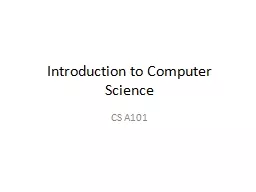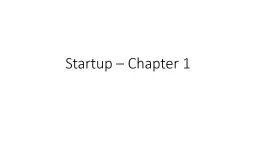PPT-Computer Science I Looking at code: "Where did Prof.
Author : pasty-toler | Published Date : 2019-12-09
Computer Science I Looking at code Where did Prof Shablinsky go Reprise on Add to 15 implementation Classworkhomework Catch up classy project Propose midterm project
Presentation Embed Code
Download Presentation
Download Presentation The PPT/PDF document "Computer Science I Looking at code: "Whe..." is the property of its rightful owner. Permission is granted to download and print the materials on this website for personal, non-commercial use only, and to display it on your personal computer provided you do not modify the materials and that you retain all copyright notices contained in the materials. By downloading content from our website, you accept the terms of this agreement.
Computer Science I Looking at code: "Where did Prof.: Transcript
Download Rules Of Document
"Computer Science I Looking at code: "Where did Prof."The content belongs to its owner. You may download and print it for personal use, without modification, and keep all copyright notices. By downloading, you agree to these terms.
Related Documents














